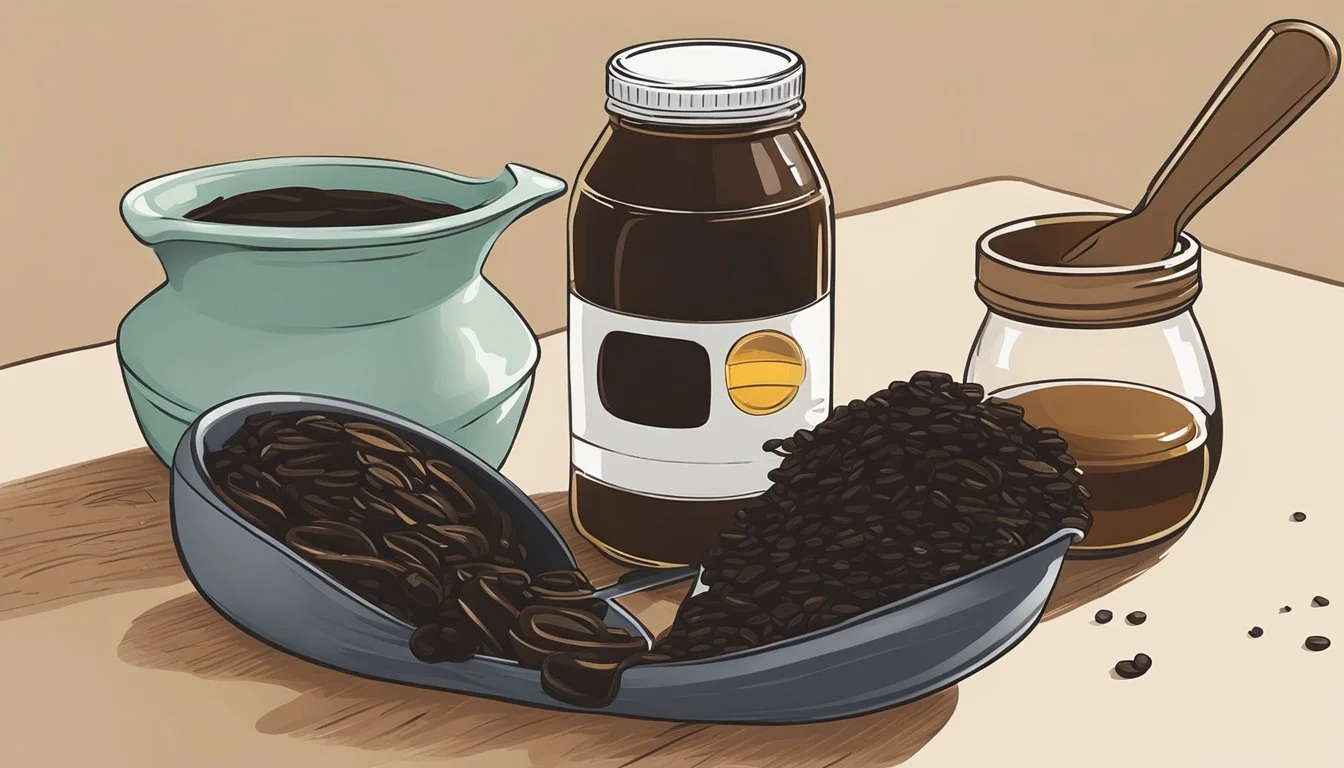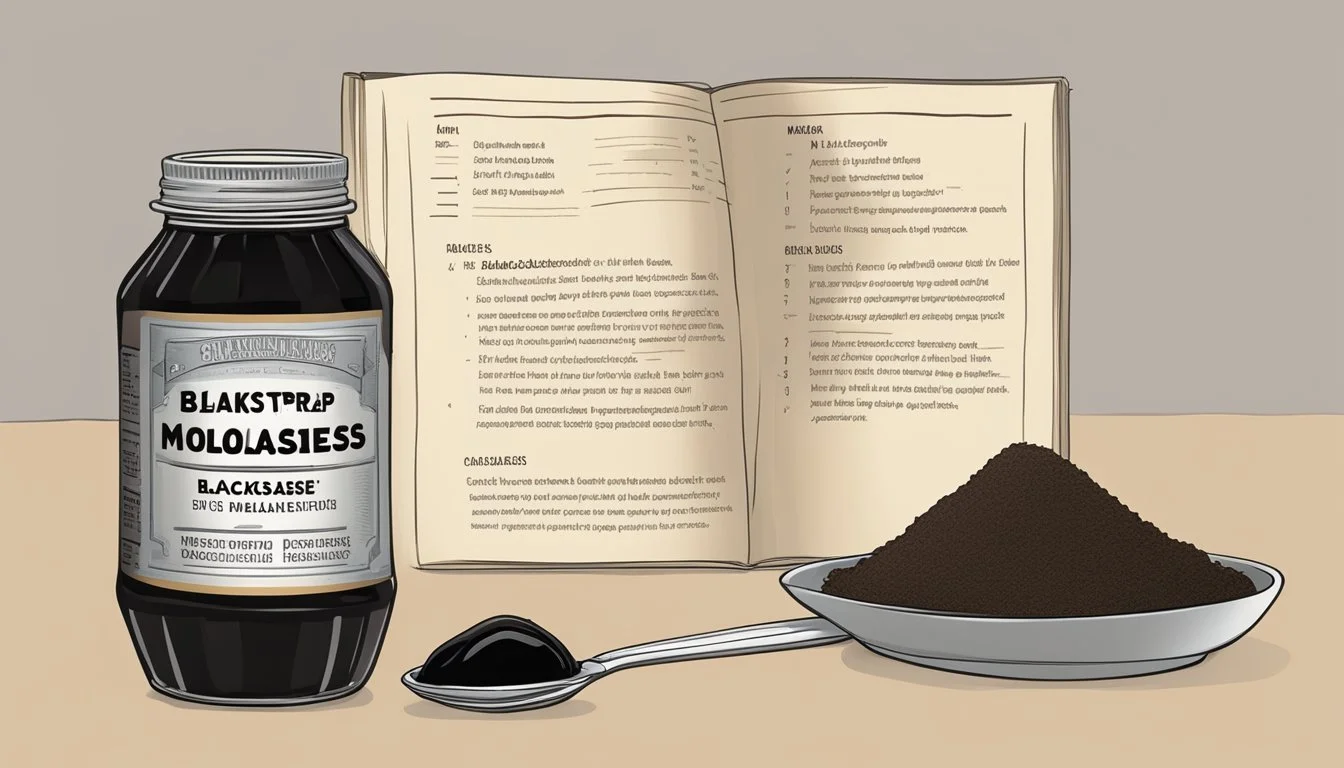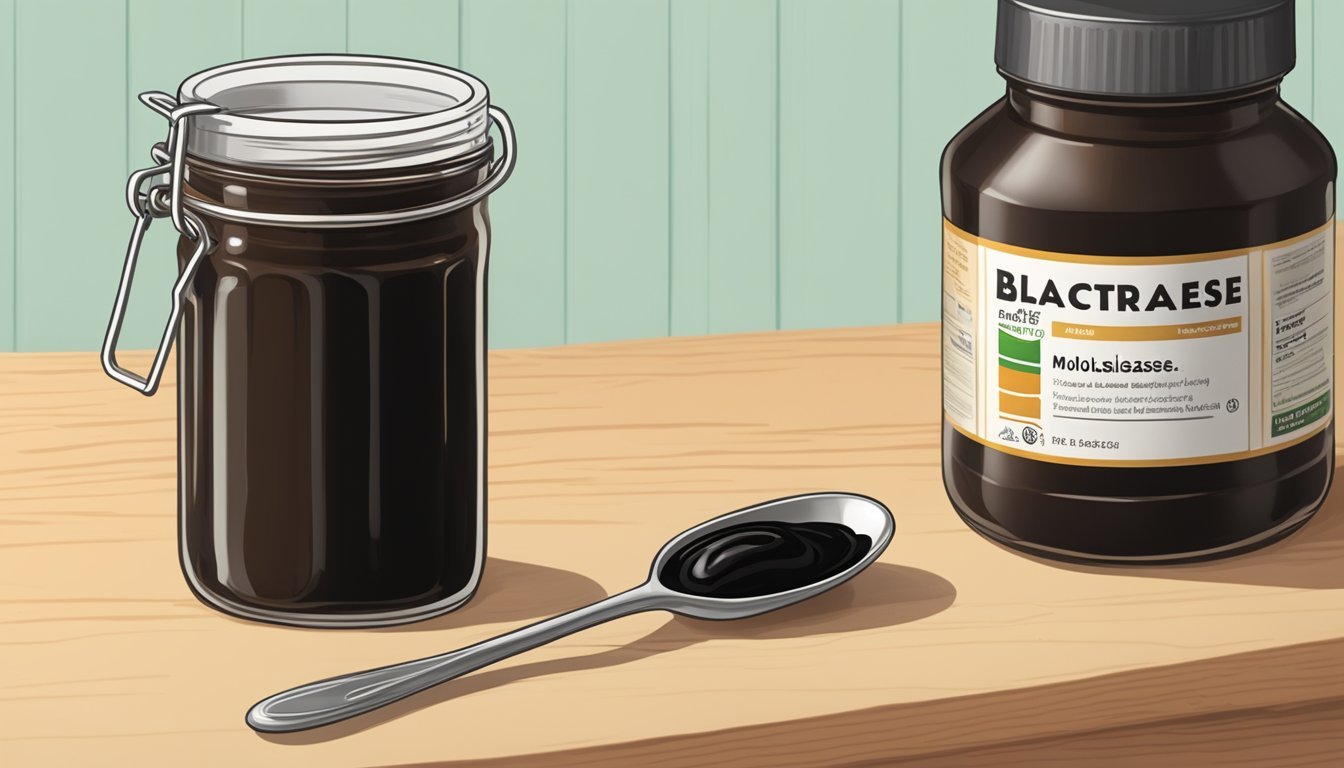How to Substitute Blackstrap Molasses for Regular Molasses
A Straightforward Guide
Blackstrap molasses, a byproduct of the sugar-making process, offers a robust flavor compared to the milder taste of light or regular molasses. It is created during the third boiling of sugarcane or sugar beet juice, resulting in a darker color and a concentration in minerals. Blackstrap molasses is sometimes sought after for its potential health benefits due to its higher mineral content, but its intense flavor can overwhelm a recipe if used as a direct substitute for light or regular molasses.
In cooking and baking, molasses serves not only as a sweetener but also as a source of moisture and a means to add a rich, caramel-like flavor. Light molasses is derived from the first boiling of the sugarcane juice and imparts a milder flavor, making it more versatile for a range of recipes. While dark molasses originates from the second boiling and still retains a gentle sweetness, blackstrap molasses has a much bolder, bittersweet taste.
To successfully substitute blackstrap molasses for light or regular molasses, one must consider both the flavor impact and the recipe's balance. Modifying the quantity of blackstrap molasses can help mitigate its stronger taste. For instance, if a recipe calls for one cup of light molasses, using half a cup of blackstrap molasses may be more appropriate to avoid overpowering the dish. This approach allows for the unique flavors and the desired consistency to be maintained without compromising the overall taste of the culinary preparation.
Understanding Molasses Varieties
Molasses is a byproduct of the sugar-making process from sugarcane, which undergoes several extractions resulting in different types of molasses—each with its own flavor profile, color, and nutritional content.
The Differences Between Light, Dark, and Blackstrap Molasses
Light Molasses:
Flavor: Mild, sweet, with a subtle hint of bitterness.
Color: Light brown.
Sugar-making process: It's the product of the first boiling of sugarcane juice.
Dark Molasses:
Flavor: Richer and more intense than light molasses, with a balance of sweetness and a bittersweet undertone.
Color: Dark brown.
Sugar-making process: Comes from a second boiling after light molasses has been extracted.
Blackstrap Molasses:
Flavor: Significantly less sweet, with a robust, bitter flavor.
Color: Very dark, almost black.
Sugar-making process: It's the result of the third boiling, concentrating the remaining nutrients after sugar crystals are removed.
Nutritional Profile of Molasses Types
Light Molasses: It provides a blend of vitamins and minerals, though not as concentrated as darker varieties.
Dark Molasses: Contains more nutrients than light molasses, offering a better source of calcium and magnesium.
Blackstrap Molasses:
Nutrients: High in minerals such as calcium, iron, and magnesium.
Minerals:
Calcium: Critical for bone health.
Iron: Essential for blood production.
Magnesium: Important for various bodily functions.
Vitamins: Contains vitamins but less prominent than mineral content.
Substituting Blackstrap for Regular Molasses
Substituting blackstrap molasses for regular molasses involves careful measurement adjustments and consideration of the final flavor profile due to blackstrap's more robust and bitter taste. This section guides readers through the process ensuring their recipes retain the desired taste and texture.
When to Substitute
One may consider using blackstrap molasses as a substitute in recipes that call for regular molasses for its nutritional benefits or when regular molasses is unavailable. Blackstrap molasses is the byproduct of the third boiling of sugarcane juice and is darker, more viscous, and has a stronger flavor compared to light or regular molasses which comes from the first or second boiling. It is suitable for recipes where its deep, smoky flavor complements the dish, such as in gingerbread or baked beans.
In baking: Substitute with caution; good for recipes with strong spices.
In cooking: Works well in savory dishes or where a pronounced molasses flavor is desired.
Adjusting for Flavor and Bitterness
Blackstrap molasses is significantly more bitter and less sweet than regular molasses. When substituting in a recipe, it's important to compensate for these differences to maintain a balanced taste.
Flavor: If a recipe calls for 1 cup of regular molasses, start by using 1/2 cup of blackstrap molasses and increase to taste.
Bitterness: To counteract the bitterness, consider adding a sweetener like honey or maple syrup.
Regular Molasses Blackstrap Molasses Additional Sweetener 1 cup 1/2 cup To taste
Tasting and adjusting are key. It's often best to add the blackstrap molasses incrementally and sample as one goes, considering the other ingredients' ability to either mask or enhance the robust flavor and inherent bitterness of blackstrap molasses. This is especially true in baking, where the chemistry of the ingredients is crucial to the outcome.
Conversion Ratios and Measurements
When substituting blackstrap molasses for regular molasses, precision with measurement and liquid content is crucial for maintaining the intended texture and flavor profile of a recipe.
Measuring Cup Comparisons
To replace light molasses with blackstrap molasses:
For 1 cup of light molasses, use 1/2 cup of blackstrap molasses.
Note: This ratio ensures the robust flavor of blackstrap molasses does not overpower the dish.
Adjusting Liquid Content
Since the substitution involves using a smaller volume of blackstrap molasses:
Compensate for the reduced volume by adding water to achieve the correct moisture level.
For instance, if you use 1/2 cup of blackstrap molasses replacing 1 cup of light molasses, add 1/2 cup of water to balance the liquid content.
Incorporating the right amount of liquid is essential, as it influences the boiling point and the potential for sugar crystals to form during cooking and baking.
Alternative Sweeteners to Molasses
In the culinary world, finding the right alternative sweetener to molasses can affect both the flavor and texture of recipes. This section will explore various substitutes, focusing on their properties, usage, and how they compare to the profile of molasses.
Utilizing Honey and Maple Syrup
Honey is a natural sweetener that can replace molasses in a range of recipes, including baking, marinades, and sauces. When substituting for blackstrap molasses, honey offers a lighter, often floral, flavor and its sweetness is more pronounced. To substitute, honey can be used in equal parts to the amount of molasses required.
Maple syrup, derived from the sap of maple trees, features a distinct flavor that can be both sweet and complex. With a consistency similar to that of molasses, it serves well as a substitute in many dishes. However, maple syrup is generally sweeter than molasses, and recipes might need adjustment to account for the different levels of sweetness.
Using Corn Syrups and Treacle
Dark corn syrup is a sweetener with a moderate molasses flavor, it tends to be less sweet than its light counterpart and can be used in similar quantities to molasses when substituting. Light corn syrup lacks the stronger flavor notes of molasses but can serve as a texture enhancer in baked goods.
Treacle and golden syrup are traditional British sweeteners with a consistency and sweetness close to that of light and dark molasses, respectively. Treacle can be a closer match in terms of the robust flavor provided by molasses. When substituting for blackstrap molasses, one can either use these syrups directly in place of molasses or mix them with granulated sugar, light brown sugar (contains less molasses content), or dark brown sugar (implies a more robust flavor with a higher molassess content) to achieve a similar sweetness and moisture profile.
The substitutes discussed can vary in their contents of fructose and sucrose, which can affect the taste and texture of the final product. One would need to experiment with quantities and proportions to achieve the desired outcome in recipes.
Impact on Baking and Cooking
Substituting blackstrap molasses for regular molasses can significantly alter the flavor and texture of both baked goods and savory dishes due to its more intense taste and differing sugar and moisture content.
Effects on Baked Goods
When blackstrap molasses replaces regular molasses in baked goods, the results are often much darker with a stronger, slightly bitter flavor profile. This can enhance the complexity of recipes such as pumpernickel bread, where a deep, robust taste is desired. Here are specific considerations for baking:
Cookies and Cakes: The sugar content in blackstrap molasses (about 70% sugar) means that it can contribute to the sweetness of the dish, but its pronounced flavor must be counterbalanced. Recipes may require additional adjustments, including reducing other strong flavors or augmenting with a sweeter component like honey.
Baking Components: When using blackstrap molasses, it's crucial to check the balance of flour and baking soda. Since it can affect the acidity of the dough or batter, it may interact differently with leavening agents, potentially necessitating a tweak in amounts.
Adjustments for Savory Dishes
In savory applications, blackstrap molasses brings a hearty and distinctive tang that can complement ingredients in dishes such as baked beans, barbecue sauce, and pulled pork.
Baked Beans: Incorporating blackstrap molasses can enrich the dish with its mineral-rich sweetness, adding depth to the beans' flavor.
Barbecue Sauce: Here, blackstrap molasses imparts a robust sweetness that stands up to the smokiness and spiciness of the sauce.
Savory Dish Balance: Chefs should adjust the seasonings and sweetness levels in savory dishes when using blackstrap molasses to maintain flavor balance. This may include reducing other sweet elements or adding acid to counteract the molasses' intensity.
Tips for Working with Molasses
When substituting blackstrap molasses for regular molasses, it's essential to understand the unique properties of molasses. The following sections provide guidance on how to balance flavors when using molasses and where to find various types in supermarkets.
Balancing Spices and Flavors
Molasses has a distinctive taste and aroma, which can significantly impact the flavor profile of a dish. Blackstrap molasses is darker, thicker, and less sweet than light molasses, with a stronger, more bitter flavor. When using it as a substitute:
Spice Adjustment: Consider reducing strong spices like ginger and allspice to prevent overpowering the dish.
Flavor Balance: To counteract bitterness and enhance sweetness, one might add a touch of honey or maple syrup.
Aromatic Blends: Pair blackstrap molasses with complementary aromatics such as vanilla or cinnamon to create a well-rounded flavor.
Finding Molasses in Supermarkets
Locating the right type of molasses can be straightforward if one knows where to look. Supermarkets typically stock molasses in the baking aisle, but varieties can differ:
Type of Molasses Characteristics Common Uses Light Molasses Sweet, mild flavor Baking, marinades Dark Molasses Robust flavor Gingerbread, baked beans Blackstrap Molasses Intense, bitter flavor Health tonics, robust recipes
Supermarket Sections: Apart from the baking aisle, one can also check the health food or international sections for molasses varieties.
Variety Consideration: It's important to select the appropriate type based on desired sweetness and depth of flavor.
Alternative Options: If blackstrap molasses is unavailable, substitutes like sorghum syrup or a mix of dark corn syrup with a bit of instant coffee can be used to mimic its deep flavors.
FAQs About Blackstrap Molasses Substitutes
When looking to replace blackstrap molasses in a recipe, it's important to consider the taste, moisture, and nutritional content of potential substitutes. This section addresses common concerns around finding the right match for both the unique flavor and texture that blackstrap molasses imparts.
Common Questions and Concerns
What can I use as a substitute for blackstrap molasses in baking and cooking?
Honey: It's sweeter and lacks the bitter edge of blackstrap molasses, but contributes a similar moisture content.
Maple Syrup: Offers a distinct flavor and is less bitter, though also less rich in minerals.
Light Molasses: Closer to blackstrap in consistency but milder in taste; may alter the flavor profile less drastically.
Dark Corn Syrup: Similar viscosity, but has a higher sweetness and lacks the bitter and salty edge.
How do these substitutes affect the taste of a recipe?
Substitutes like honey and maple syrup will make the dish sweeter and less bitter than blackstrap molasses. Light molasses is a closer match in taste without the intense bitterness.
Should I adjust the quantity when substituting?
Honey and maple syrup are sweeter than blackstrap molasses, so they should be used in a one-to-one ratio or slightly less, depending on your sweetness preference.
For less sweet alternatives like barley malt syrup, you may need to use a little more to match the sweetness of blackstrap molasses.
What about the nutritional content, such as fiber?
Blackstrap molasses is higher in minerals and fiber than many of its substitutes. When you swap it out, be mindful that you're trading off nutritional value for taste.
Do substitutes alter the moisture of the dish?
Most substitutes have a similar moisture content to blackstrap molasses, but you may need to make slight adjustments in other liquids for the perfect consistency, especially in baking.
Can substituting change the way food cooks?
Substitutes with similar moisture content won't drastically change cooking times or methods, but because they can burn more quickly than blackstrap molasses, be vigilant, especially when using honey.
Are there any substitutes that mimic the salty aspect of blackstrap molasses?
While none of the common substitutes replicate the salty profile, adding a small pinch of salt to your recipe can help balance the flavors when using a sweeter substitute.
Remember that each substitute brings its own unique qualities to a recipe, and tweaking may be necessary to achieve the desired balance of flavor, moisture, and nutritional content.





